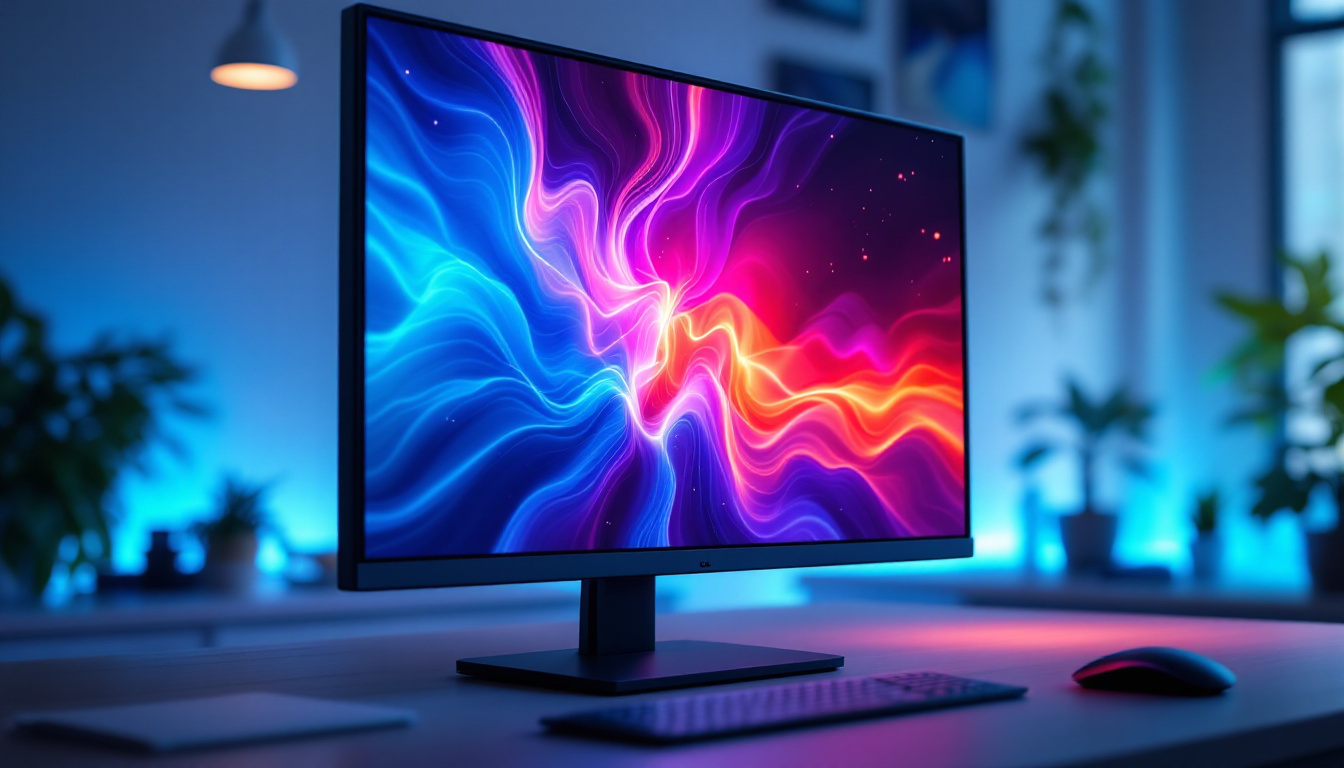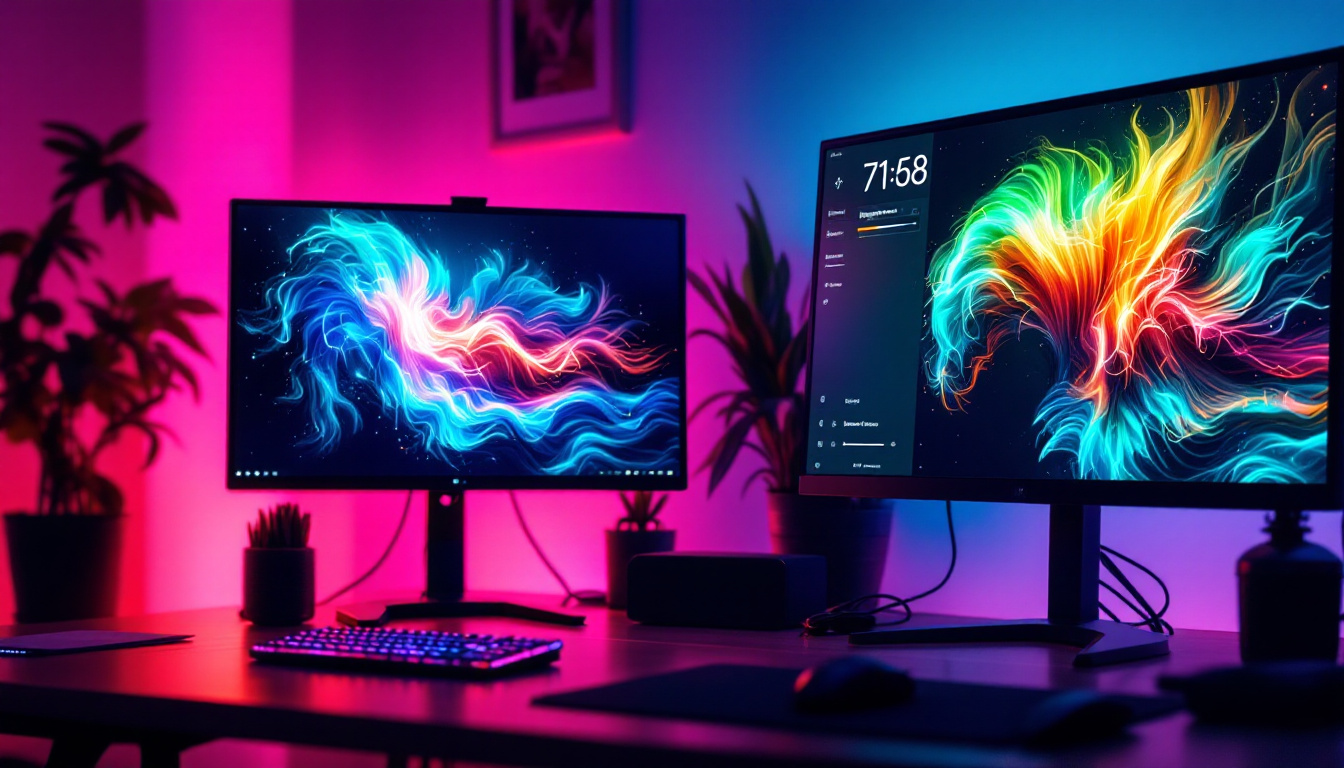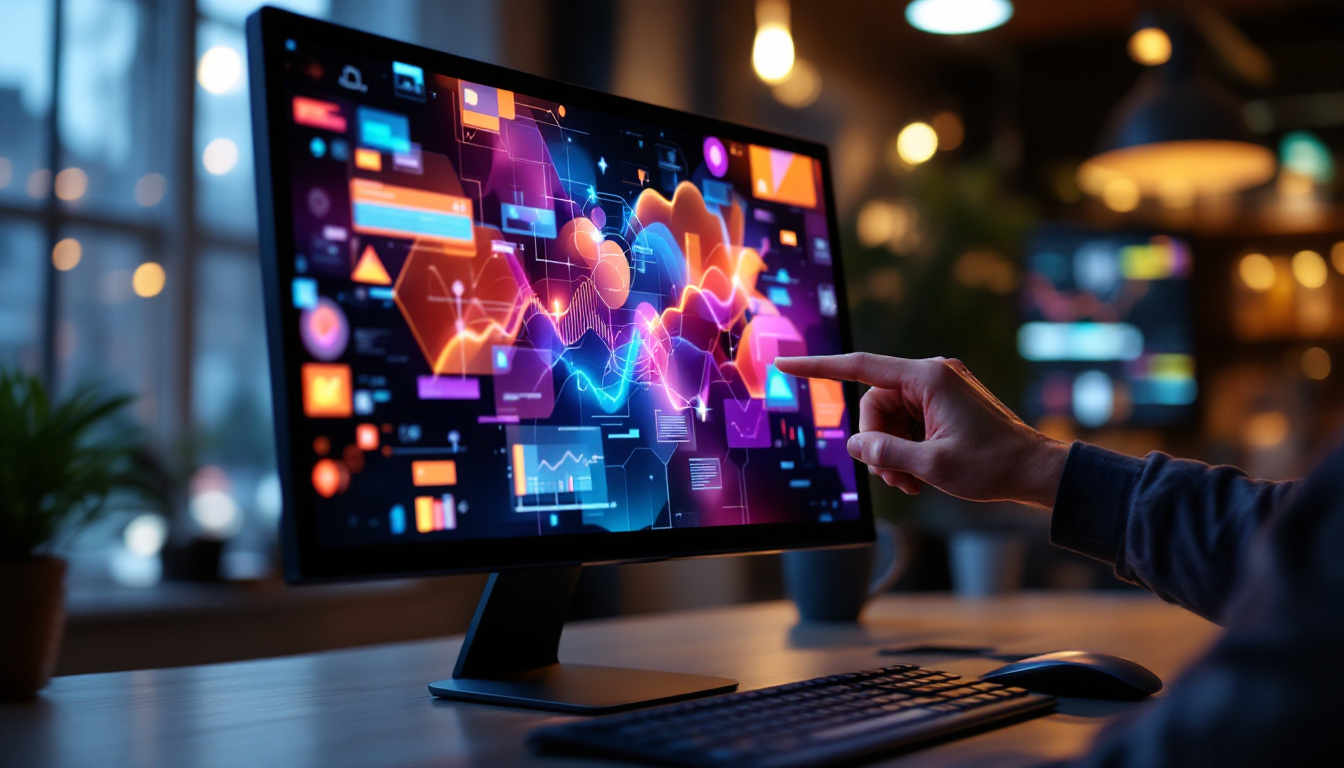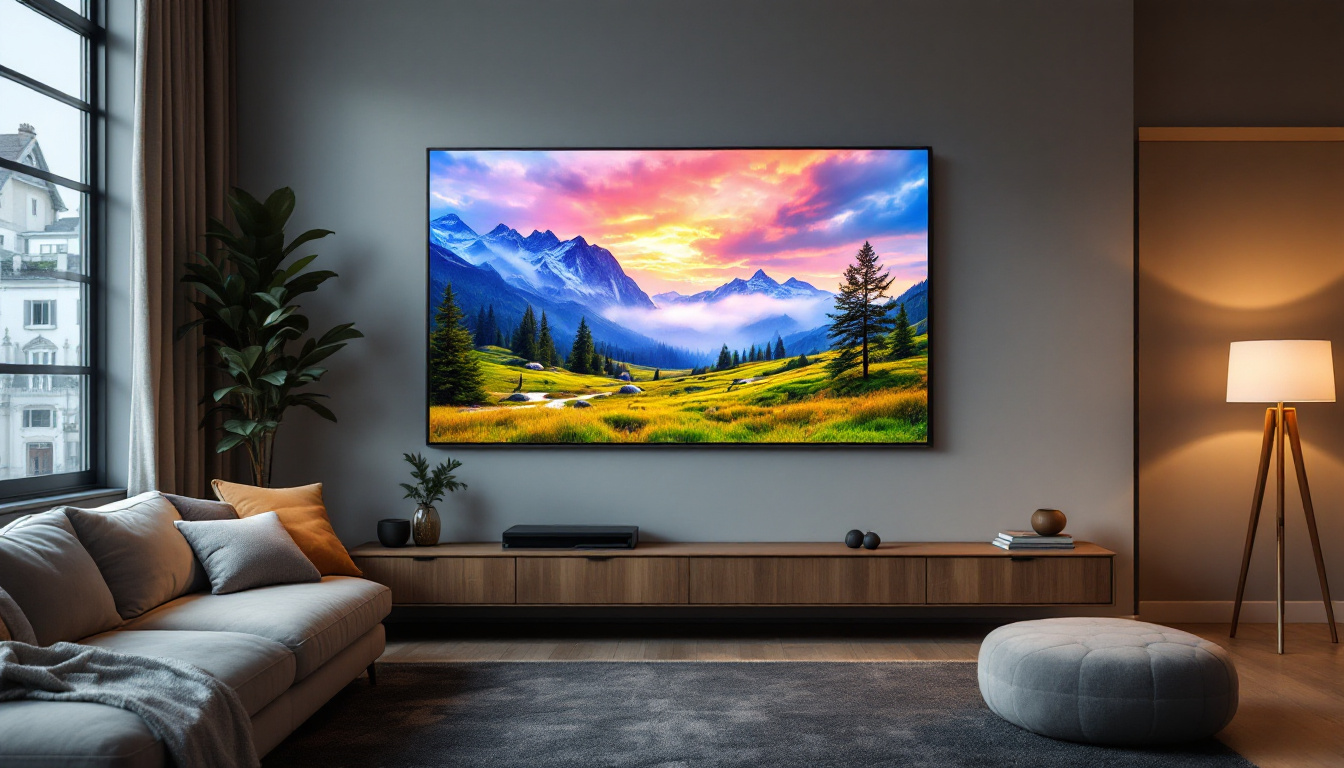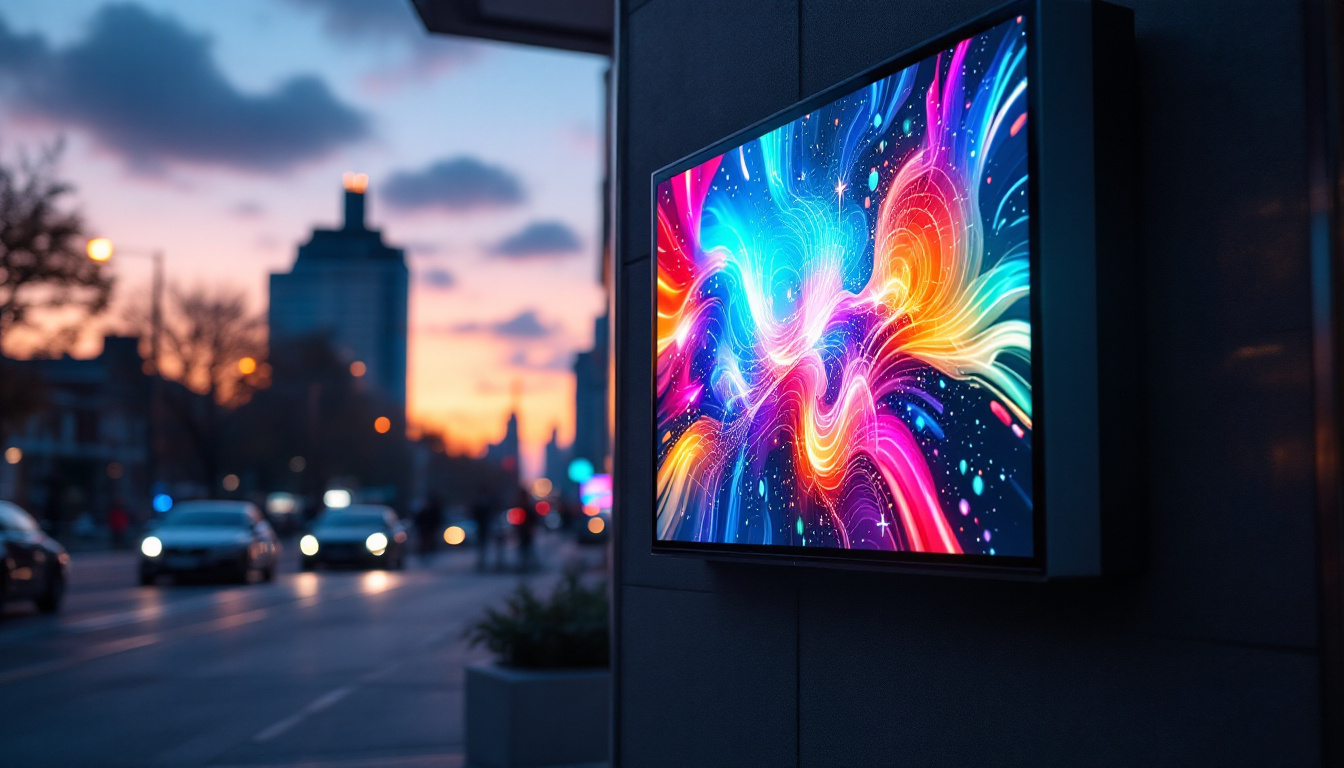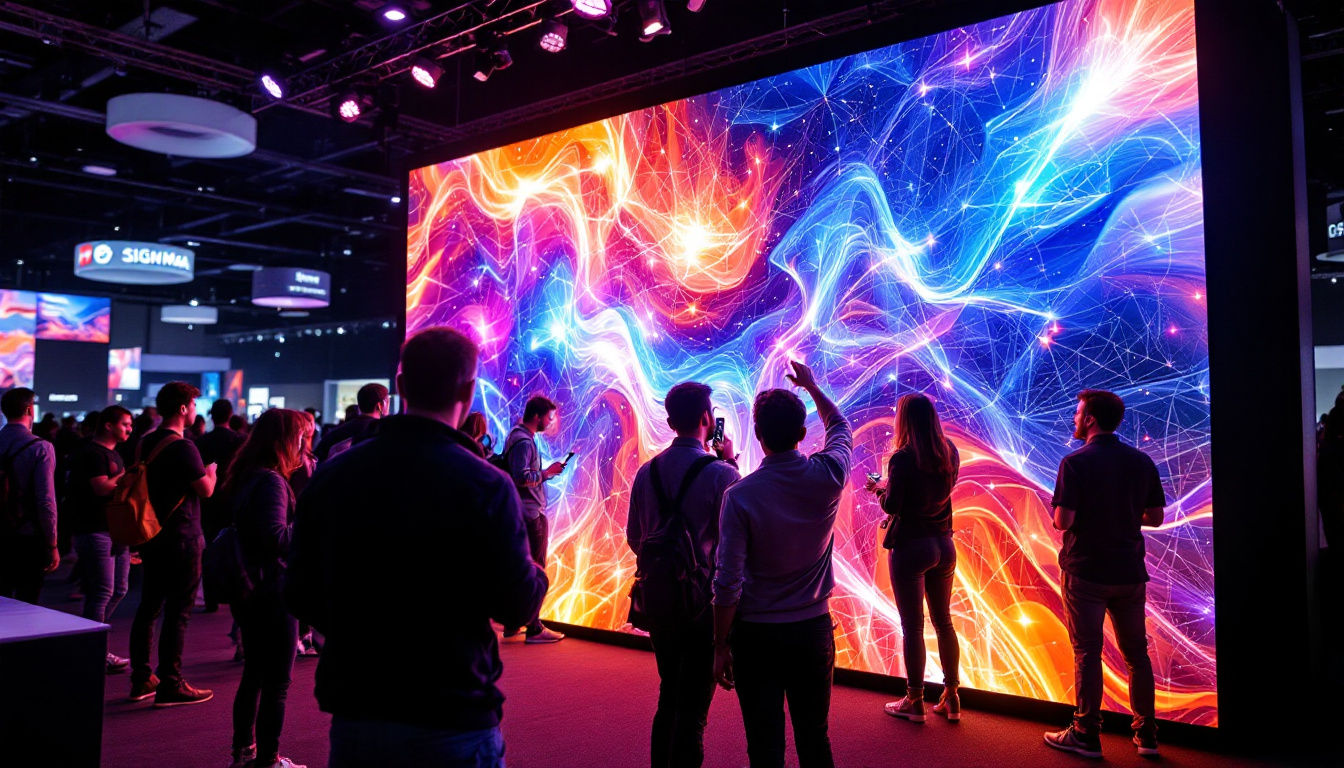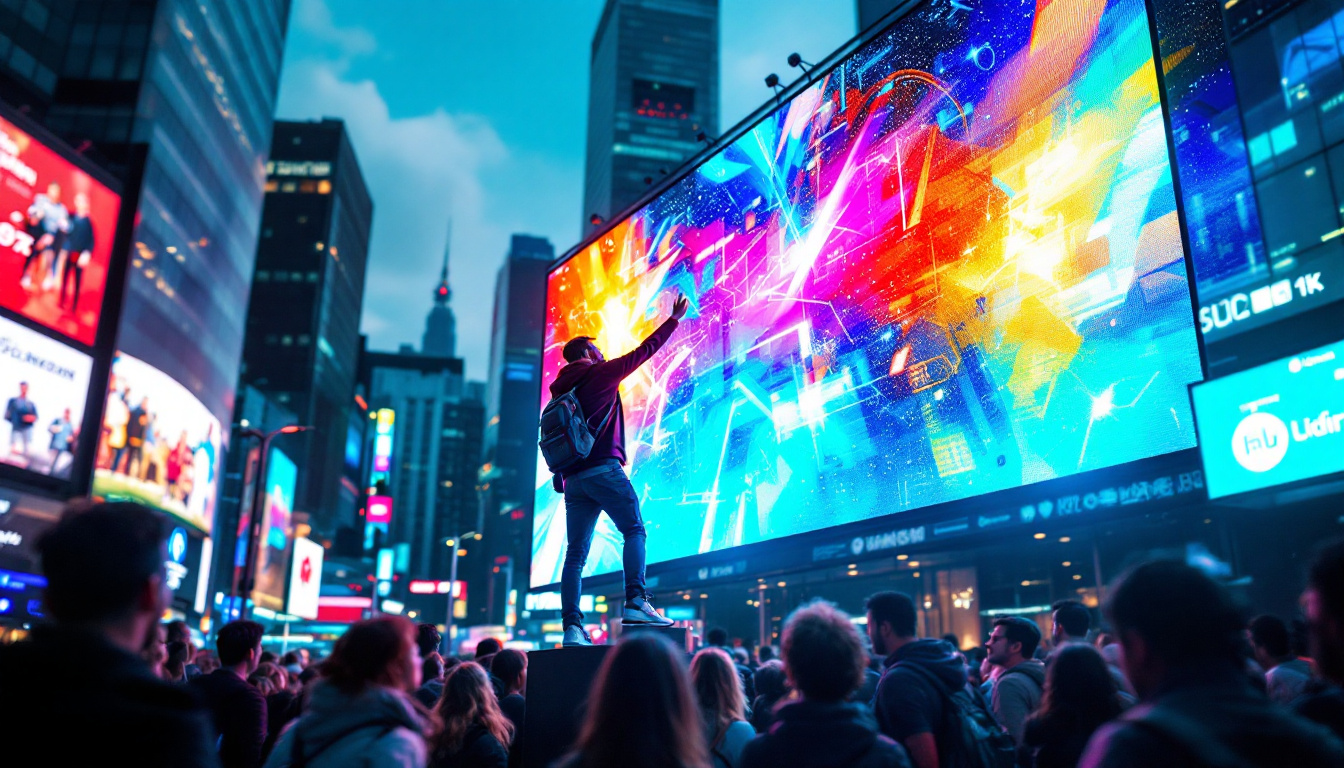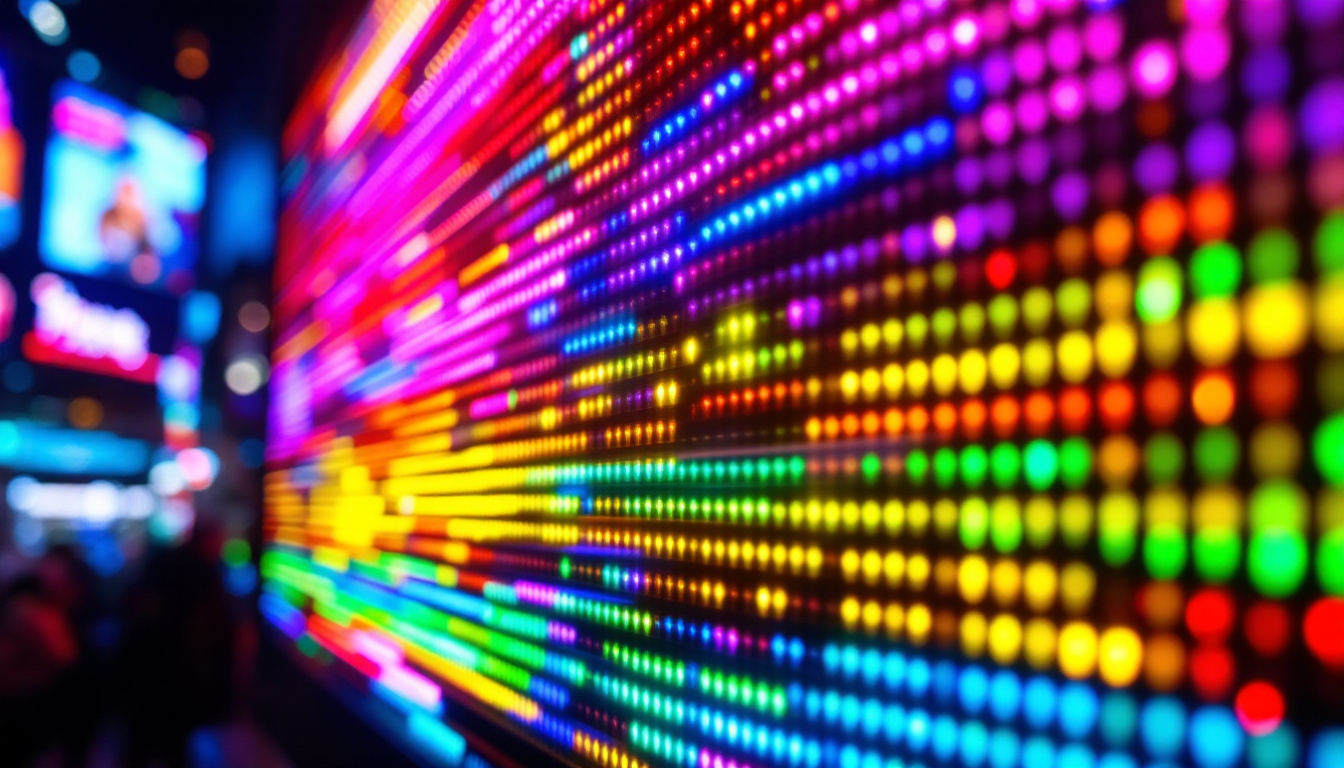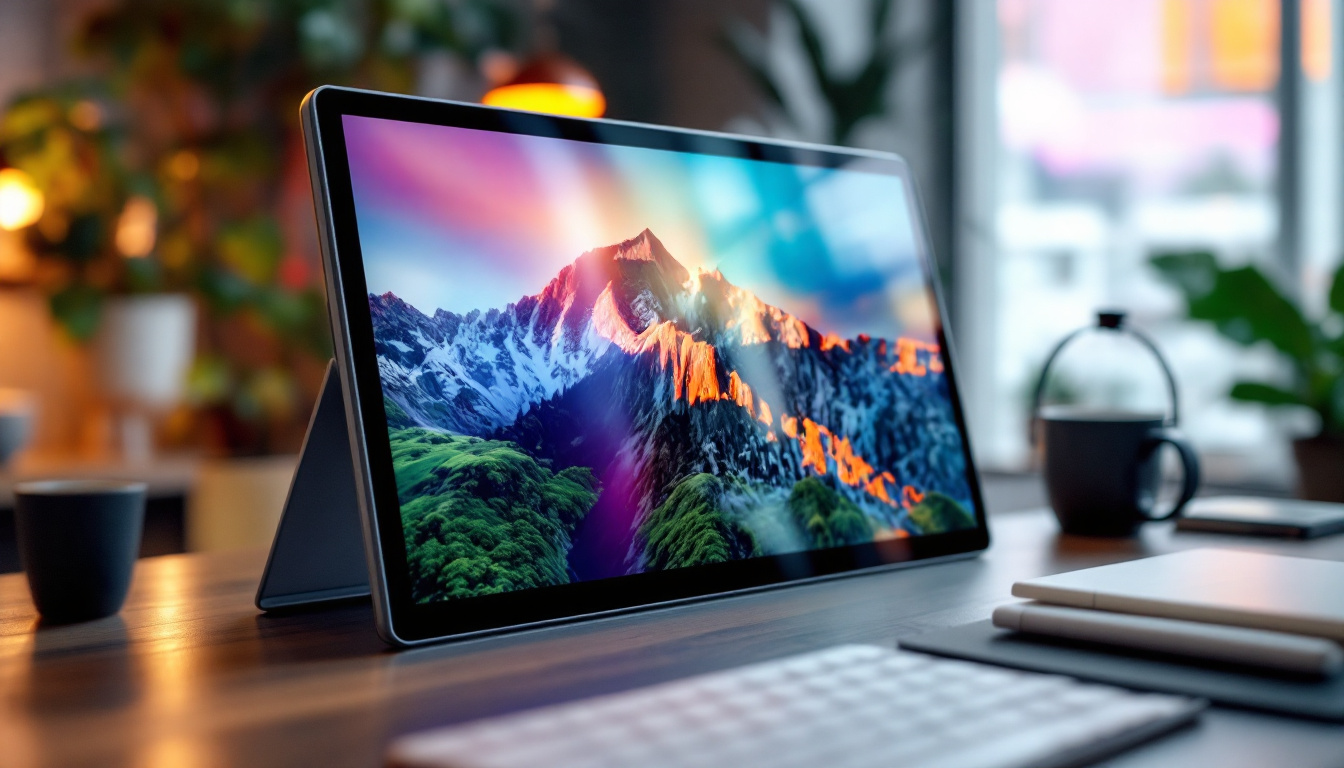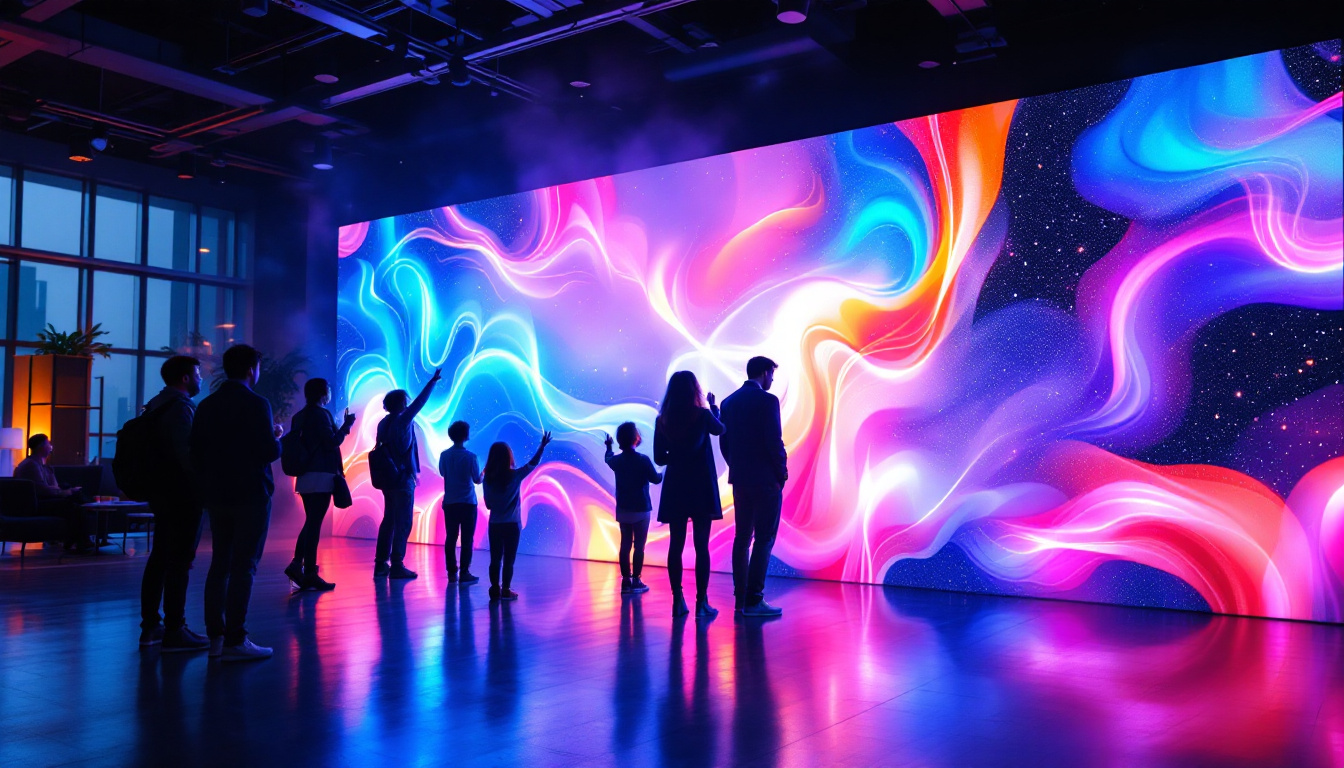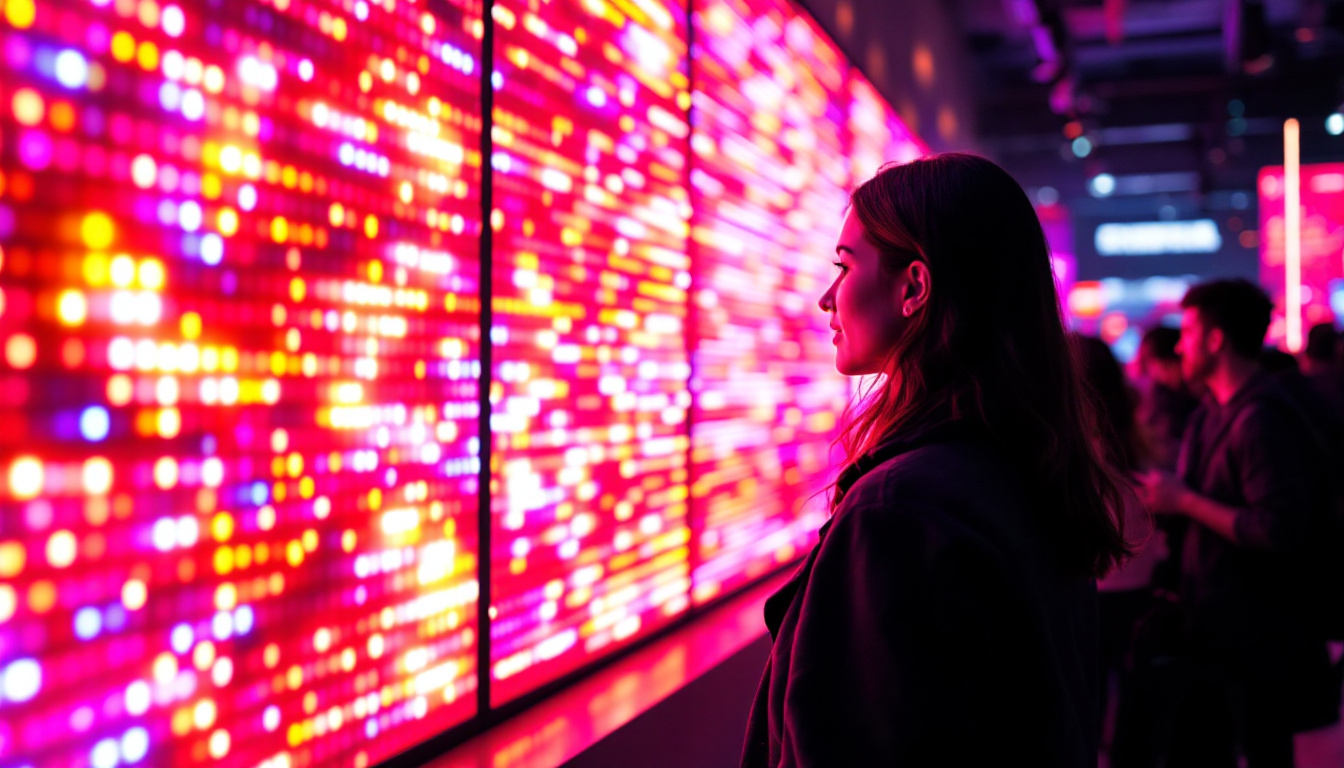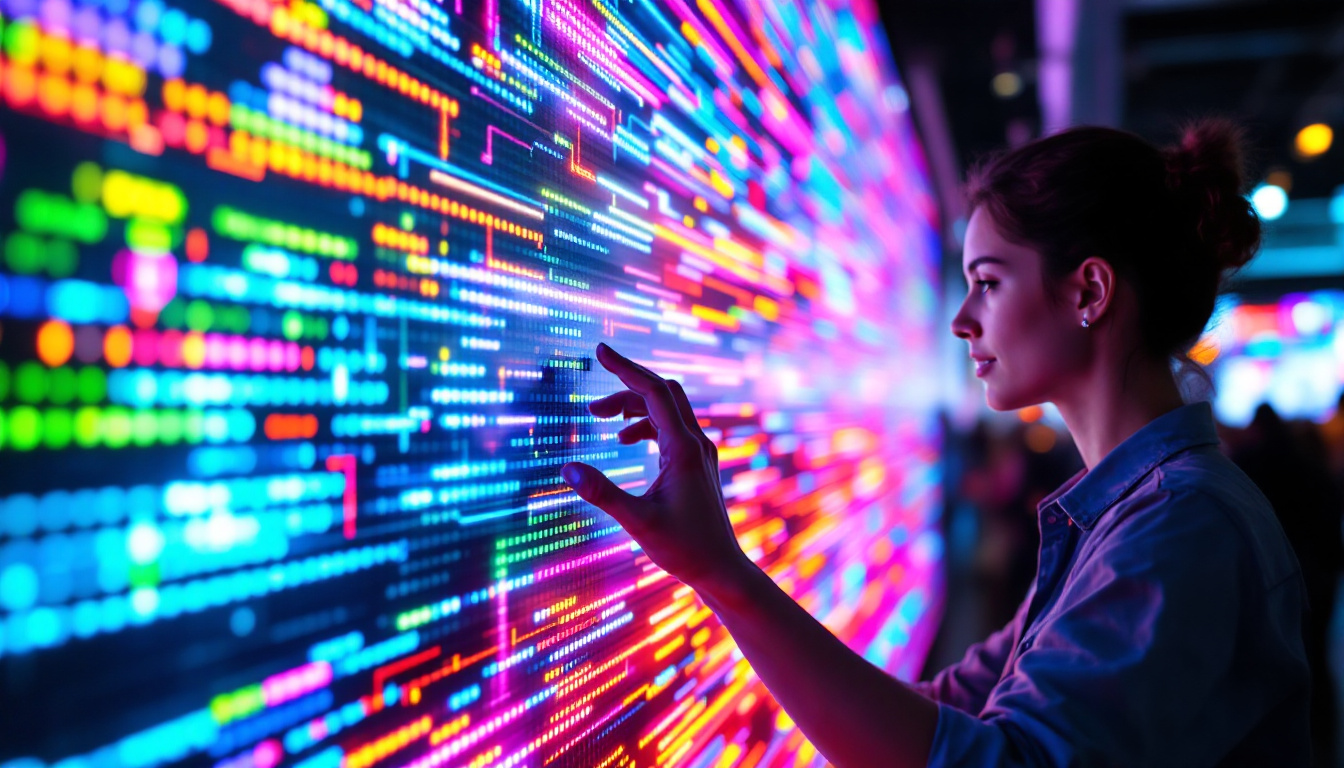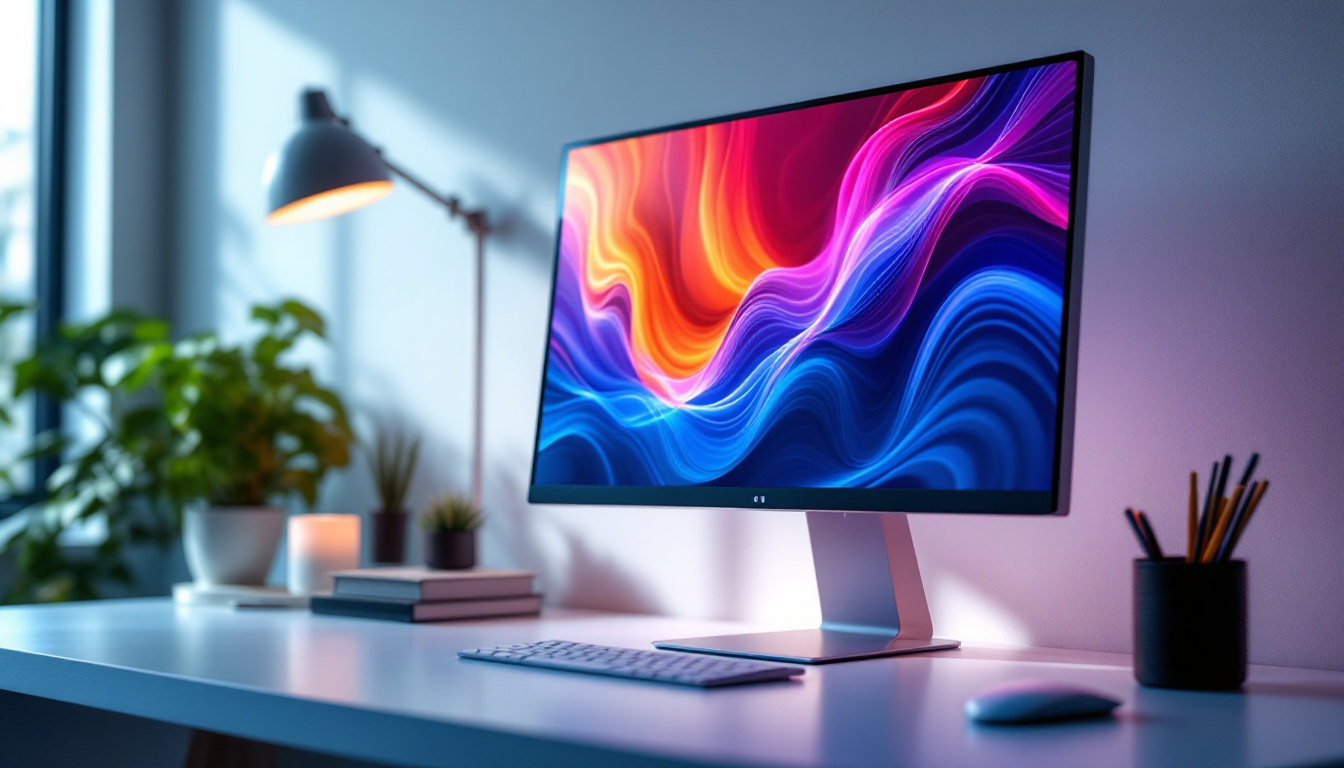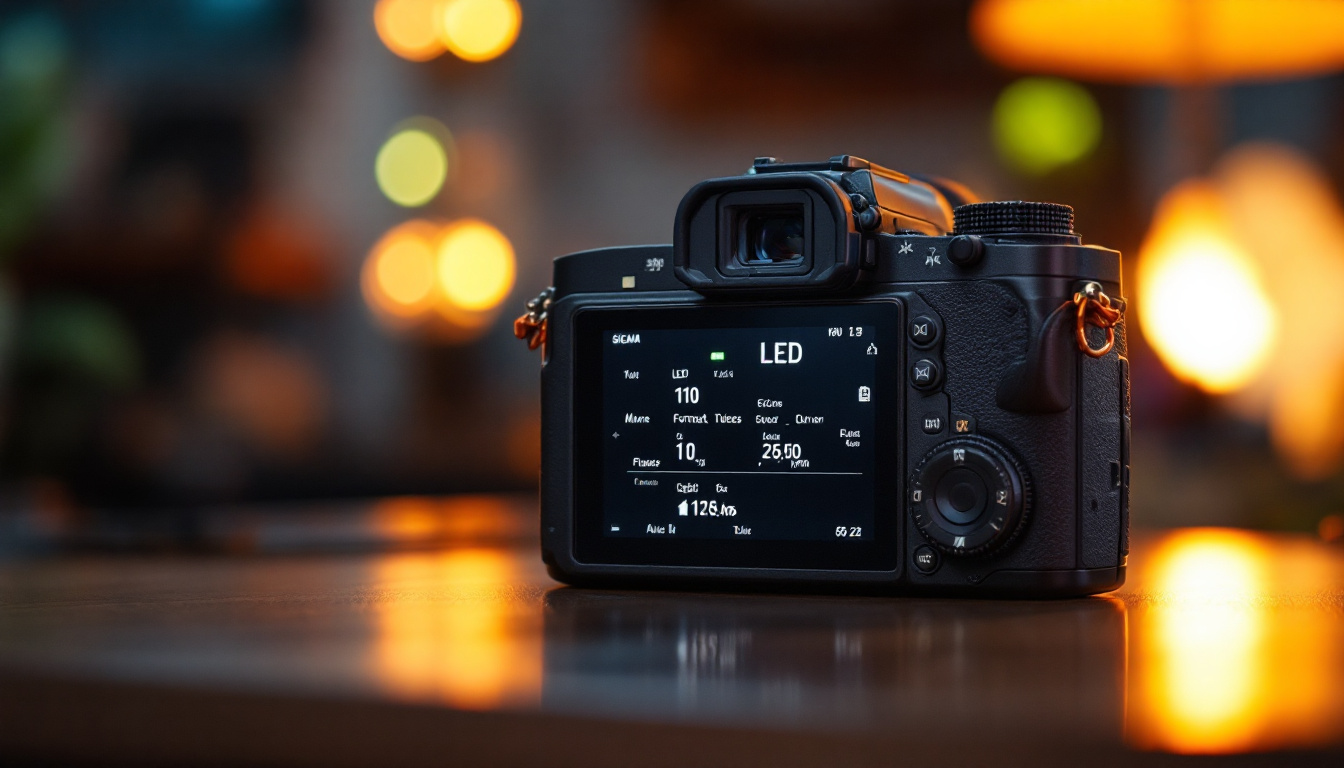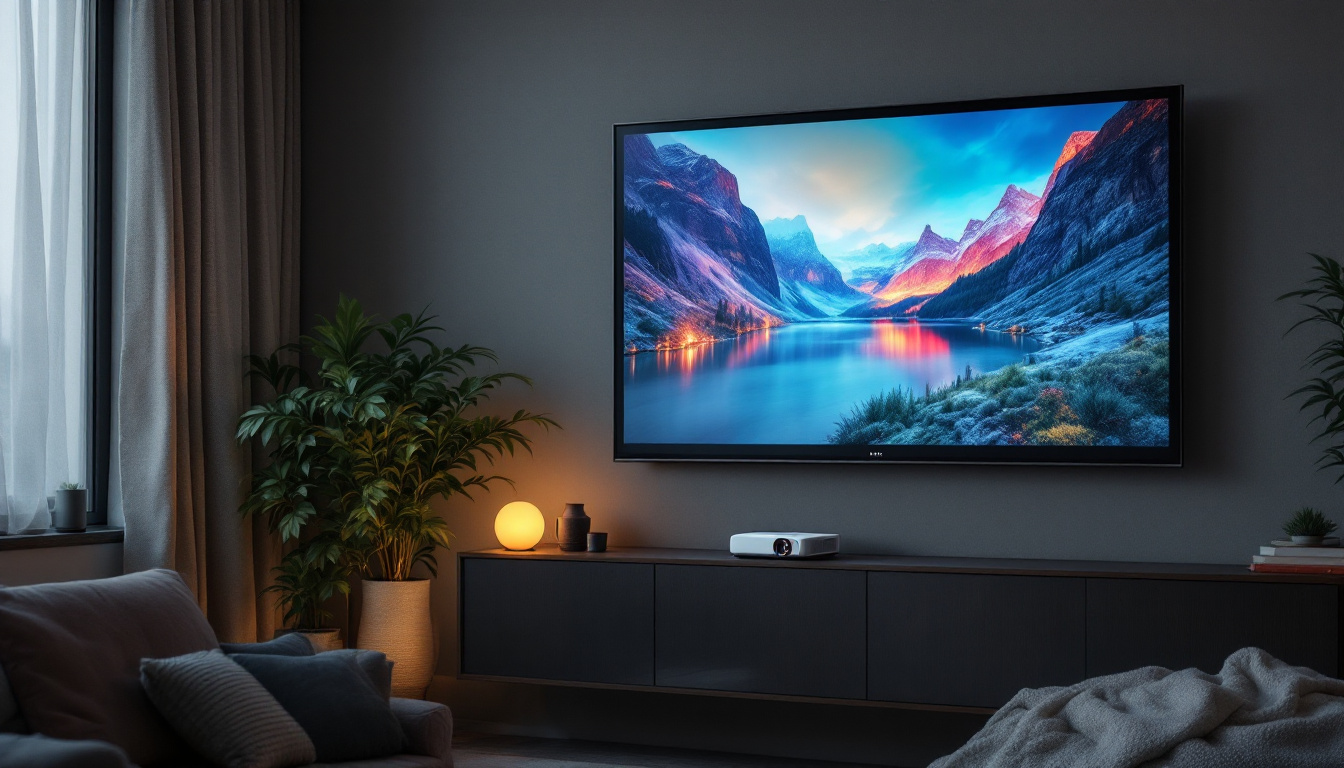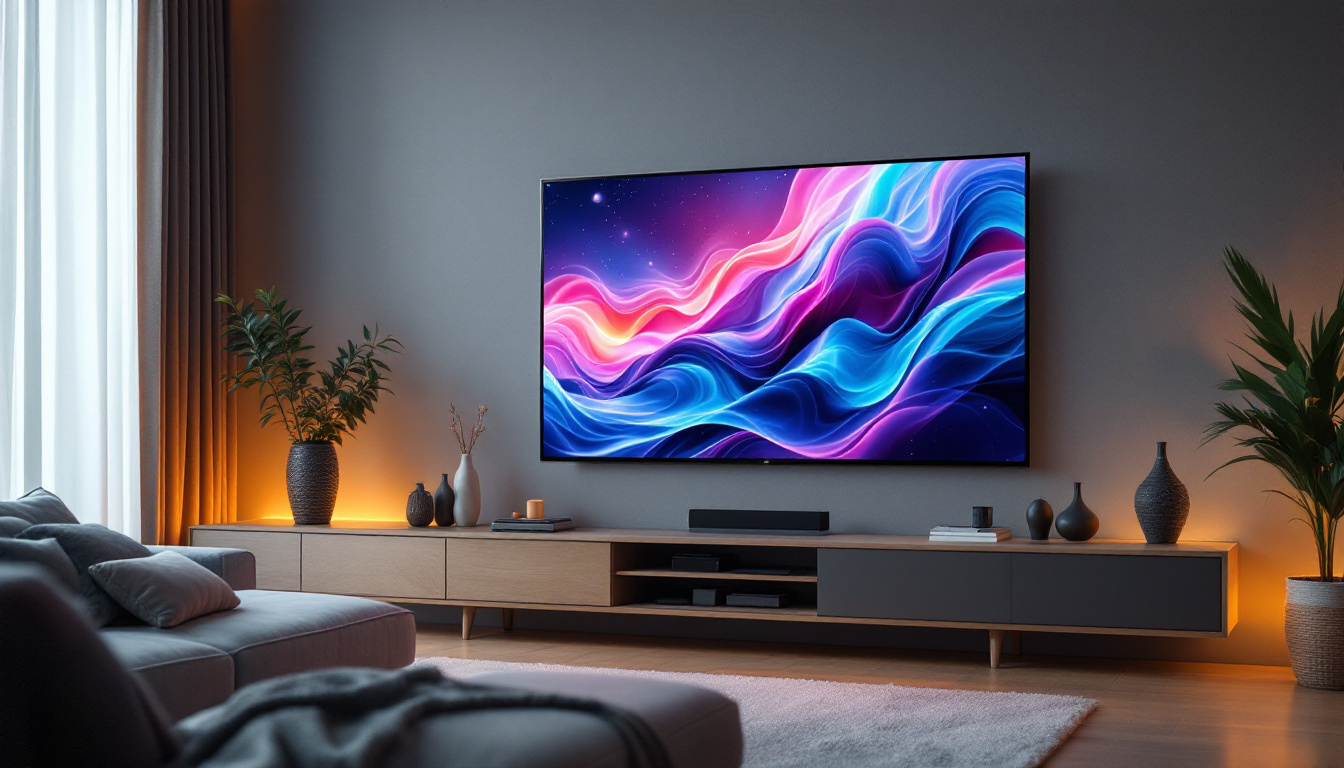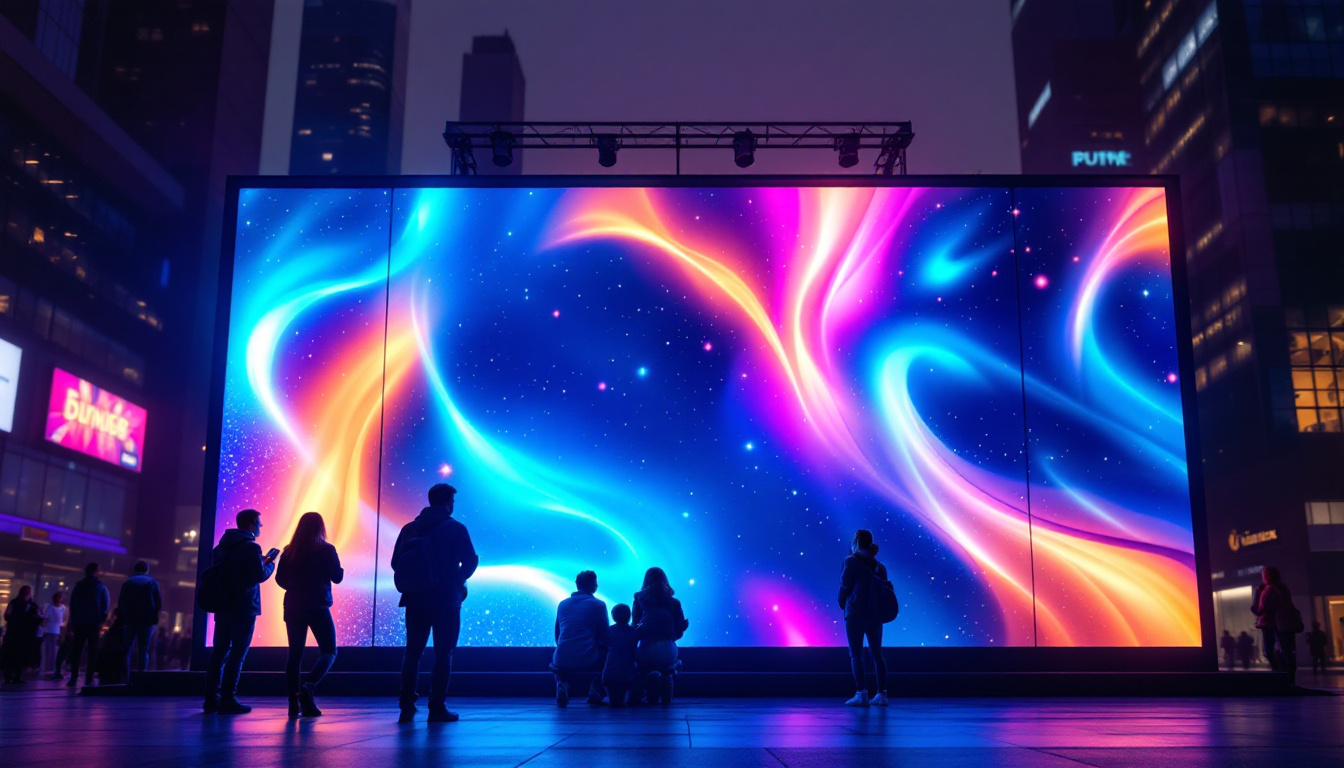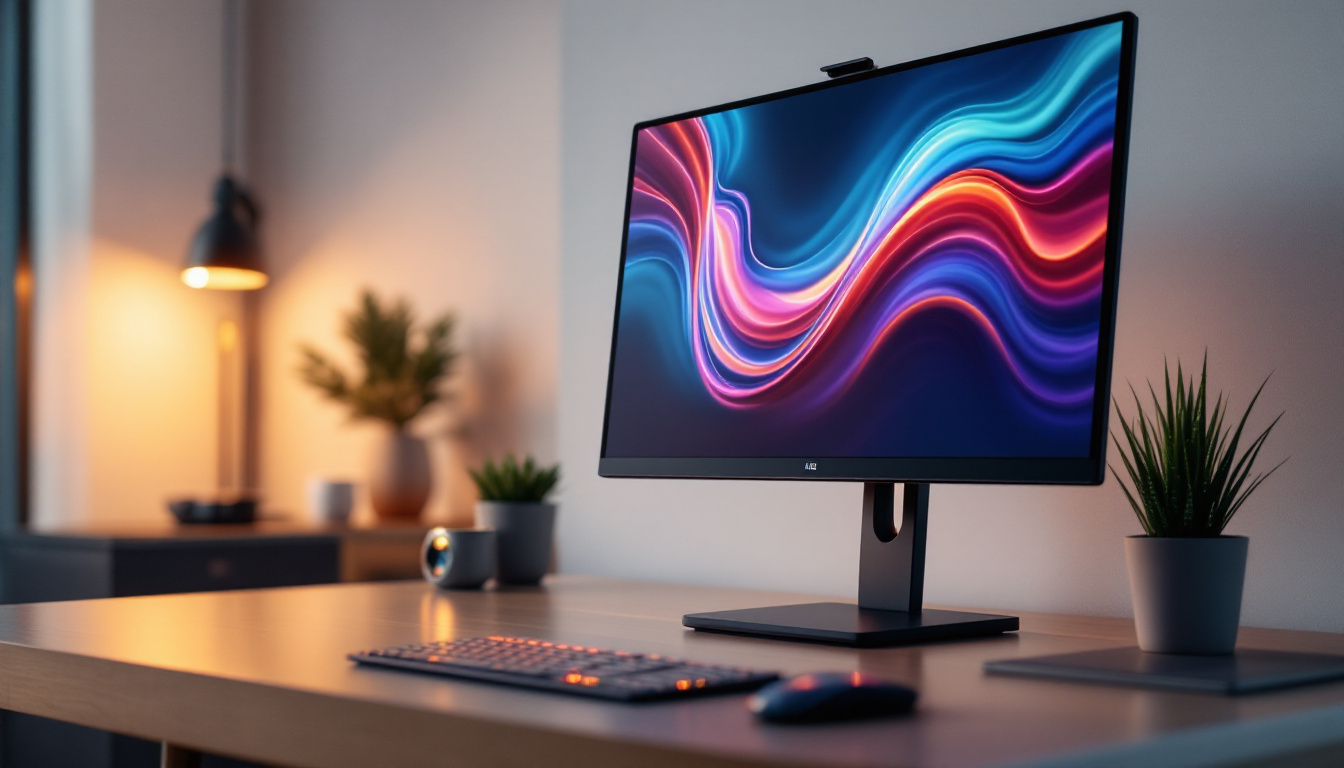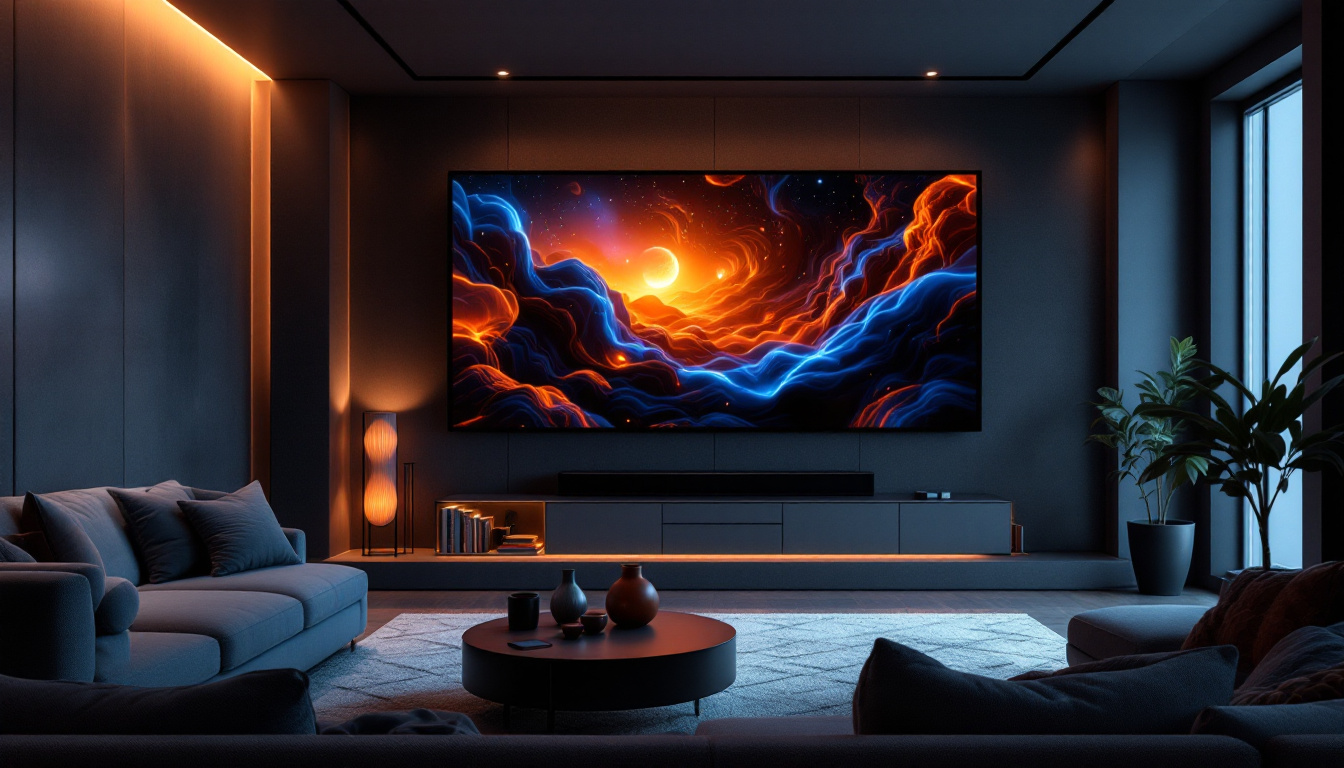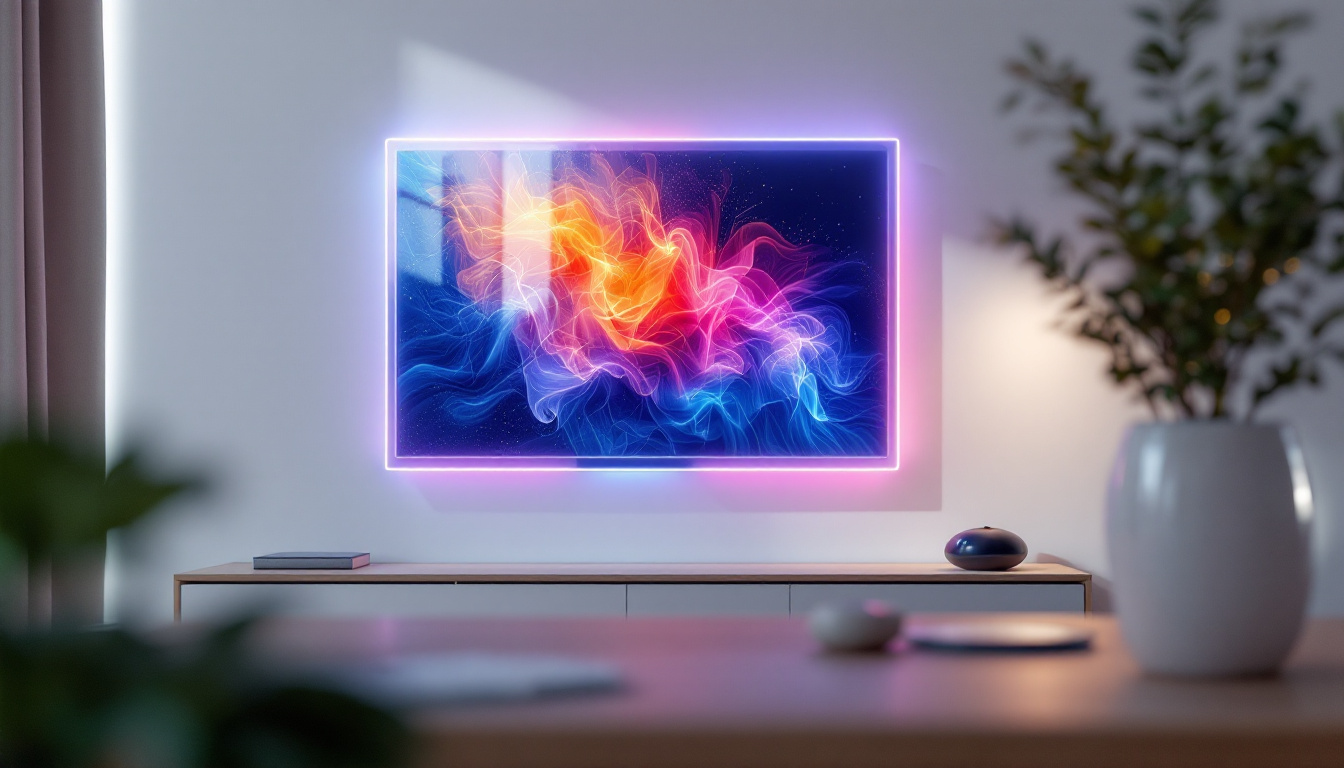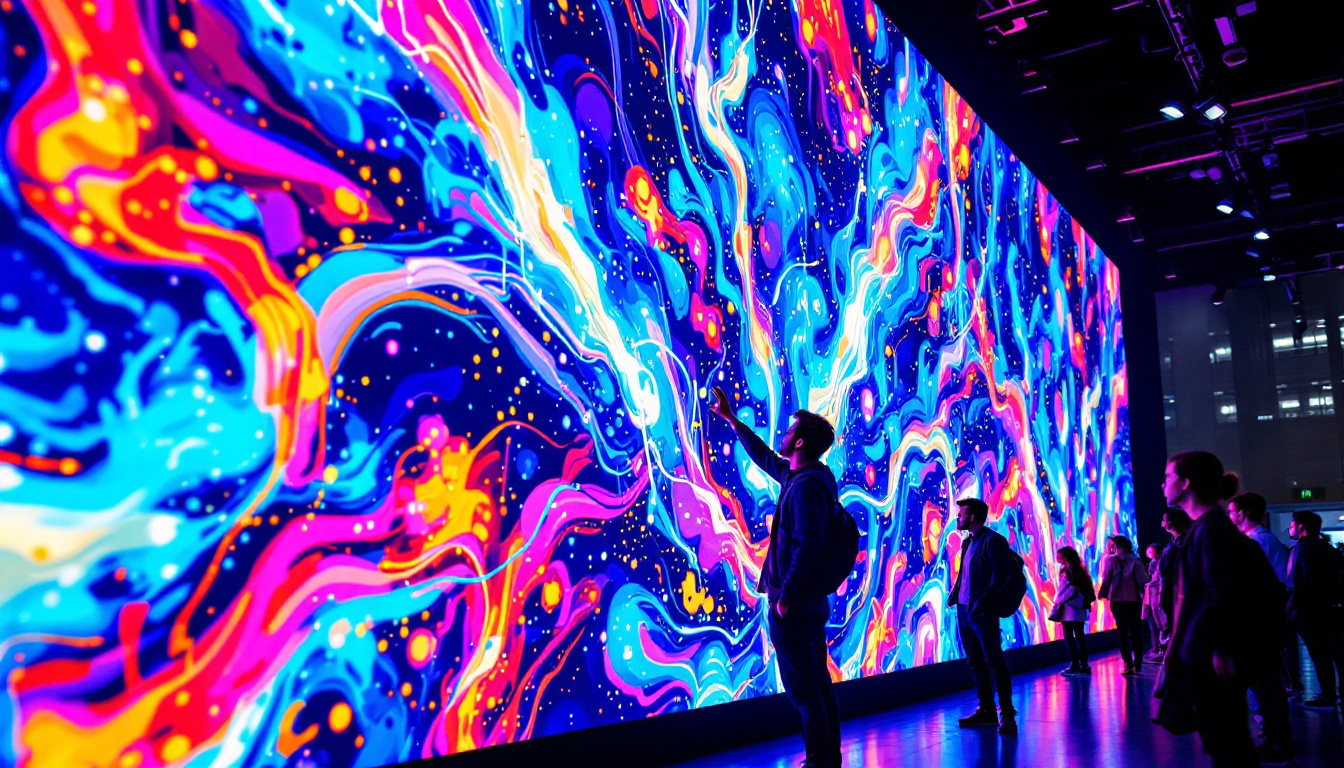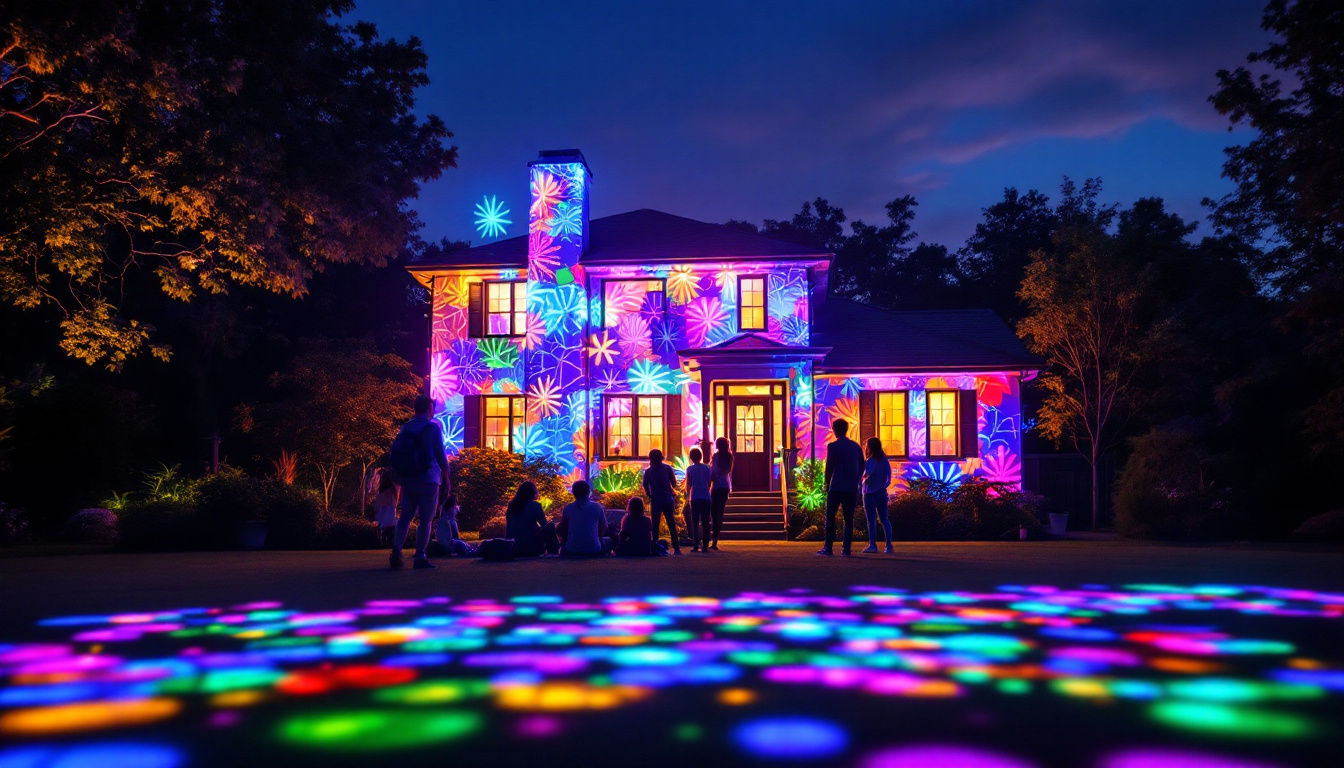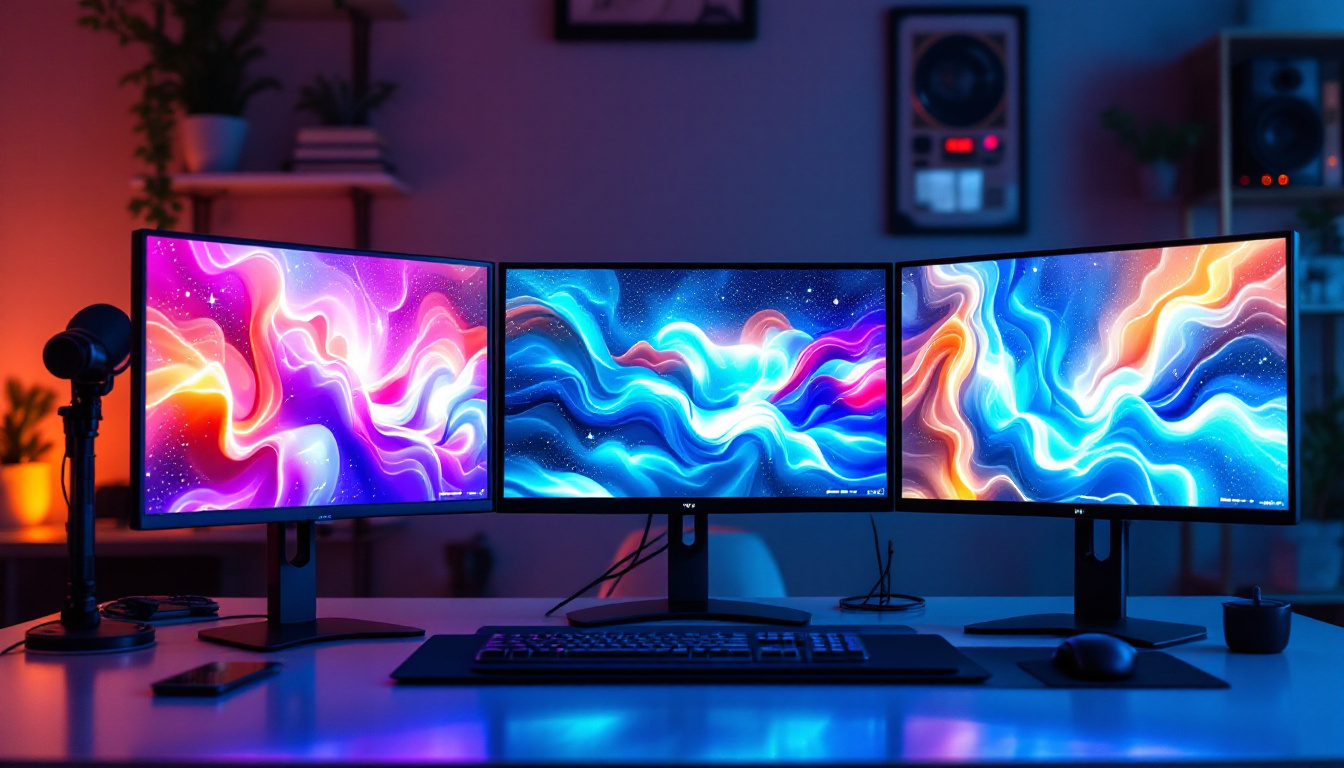In the world of technology, monitors have evolved significantly over the years. Among the various types of displays available today, LED (Light Emitting Diode) monitors stand out for their sleek design, vibrant colors, and energy efficiency. This article delves into the intricacies of LED displays, exploring their functionality, advantages, and the technology behind them.
Understanding LED Technology
LED monitors utilize a technology that has transformed the way images are displayed on screens. Unlike traditional LCD monitors that rely on fluorescent backlighting, LED monitors use an array of tiny light-emitting diodes to produce images. This fundamental difference not only enhances the quality of the display but also contributes to the monitor’s overall efficiency. The shift to LED technology has not only improved the visual experience for consumers but has also led to significant energy savings, making it a more environmentally friendly option.
How LED Displays Work
At the core of LED technology is the principle of electroluminescence. When an electric current passes through a semiconductor material, it emits light. In LED displays, these diodes are arranged in a grid format, allowing for precise control over brightness and color. This results in improved contrast ratios and deeper blacks compared to conventional displays. The ability to control individual pixels also enables features like local dimming, where specific areas of the screen can be dimmed or brightened independently, further enhancing the overall picture quality.
LED monitors can be categorized into two main types: edge-lit and backlit. Edge-lit LED monitors have diodes positioned along the edges of the screen, while backlit monitors feature diodes placed behind the entire screen. Each type has its advantages, influencing factors such as thickness and uniformity of brightness. Edge-lit models tend to be slimmer and more lightweight, making them ideal for wall mounting, while backlit models often provide better color uniformity and are preferred for professional settings where color accuracy is paramount.
The Role of Color in LED Displays
Color accuracy is a crucial aspect of any display technology. LED monitors excel in this area due to their ability to produce a wider color gamut. This means they can display a broader range of colors, resulting in more vivid and lifelike images. The use of RGB (Red, Green, Blue) diodes allows for the creation of various colors through additive color mixing, enhancing the viewing experience. Additionally, many modern LED monitors support HDR (High Dynamic Range) content, which further improves color depth and contrast, allowing for a more immersive viewing experience that closely resembles what the human eye can perceive in real life.
Furthermore, advancements in LED technology have led to the development of Quantum Dot displays, which utilize nanocrystals to improve color performance even further. These innovations ensure that LED monitors remain at the forefront of display technology. Quantum Dots can enhance brightness and expand the color spectrum, making them particularly appealing for applications in graphic design and video editing, where precision is critical. As the technology continues to evolve, we can expect even more breakthroughs that will redefine our visual experiences in both entertainment and professional environments.
Advantages of LED Monitors
LED monitors offer numerous advantages over traditional display technologies. Their sleek design and superior performance make them a popular choice for both casual users and professionals alike. Here are some of the key benefits that set LED monitors apart.
Energy Efficiency
One of the most significant advantages of LED monitors is their energy efficiency. Compared to older technologies, LED displays consume considerably less power, making them an environmentally friendly option. This efficiency not only reduces electricity bills but also contributes to a lower carbon footprint.
In addition, the longevity of LED technology means that these monitors have a longer lifespan. Users can expect their LED monitors to last for several years, further enhancing their cost-effectiveness.
Thin and Lightweight Design
The sleek design of LED monitors is another appealing feature. With advancements in technology, manufacturers have been able to create thinner and lighter displays. This compact design is not only aesthetically pleasing but also makes it easier to mount on walls or fit into tight spaces.
Moreover, the lightweight nature of these monitors enhances portability, allowing users to move them with ease. This is particularly beneficial for professionals who may need to transport their equipment frequently.
Improved Picture Quality
Picture quality is a critical factor for any display, and LED monitors deliver exceptional performance in this regard. With higher contrast ratios and faster response times, these monitors provide sharper images and smoother motion. This is especially important for gamers and video editors who require precision and clarity in their work.
Additionally, LED monitors are less prone to screen burn-in, a common issue with older display technologies. This means users can enjoy static images without the fear of permanent damage to their screens, further enhancing the overall user experience.
Choosing the Right LED Monitor
When selecting an LED monitor, several factors should be considered to ensure that it meets individual needs. From screen size to resolution, understanding these elements can greatly influence the purchasing decision.
Screen Size and Resolution
Screen size is one of the first considerations when choosing a monitor. LED monitors are available in a wide range of sizes, from compact 21-inch displays to expansive 34-inch ultrawide screens. The ideal size depends on the intended use—larger screens are often preferred for gaming and multimedia, while smaller screens may suffice for office work.
Resolution is equally important, as it determines the clarity of the images displayed. Common resolutions include Full HD (1920×1080), Quad HD (2560×1440), and 4K (3840×2160). Higher resolutions provide more detail, making them ideal for tasks that require precision, such as graphic design or video editing.
Refresh Rate and Response Time
The refresh rate and response time of a monitor are critical for smooth performance, particularly in gaming scenarios. The refresh rate, measured in hertz (Hz), indicates how many times the screen refreshes per second. A higher refresh rate, such as 144Hz or 240Hz, results in smoother motion and reduced motion blur.
Response time, measured in milliseconds (ms), refers to how quickly a pixel can change from one color to another. Lower response times are preferable for fast-paced gaming, as they minimize ghosting effects. For casual users, however, standard response times may be sufficient.
Applications of LED Monitors
LED monitors have a wide range of applications across various fields. Their versatility makes them suitable for everything from home entertainment to professional work environments. Understanding these applications can help users appreciate the full potential of LED technology.
Home Entertainment
For home entertainment, LED monitors provide an immersive viewing experience. Whether for watching movies, playing video games, or streaming content, the vibrant colors and sharp images enhance the overall enjoyment. Many LED monitors now come equipped with features such as HDR (High Dynamic Range) support, which further elevates picture quality by expanding the range of colors and contrast.
Additionally, smart LED monitors with built-in streaming capabilities allow users to access their favorite content without the need for external devices. This convenience has made LED monitors a staple in modern living rooms.
Professional Use
In professional settings, LED monitors are invaluable tools for productivity. Graphic designers, video editors, and photographers benefit from the accurate color reproduction and high resolution that LED displays offer. These monitors enable professionals to work with precision, ensuring that their final products meet the highest standards.
Furthermore, LED monitors are increasingly being used in corporate environments for presentations and meetings. Their clear visibility and vibrant colors make them ideal for conveying information effectively, whether in a conference room or during a virtual meeting.
Gaming
The gaming community has embraced LED monitors for their superior performance and responsiveness. High refresh rates and low response times are essential for competitive gaming, where every millisecond counts. Many gaming monitors also feature adaptive sync technologies, such as NVIDIA G-SYNC or AMD FreeSync, which eliminate screen tearing and provide a smoother gaming experience.
Moreover, the immersive visuals offered by LED monitors enhance the gaming experience, allowing players to fully engage with their virtual environments. With the rise of esports, the demand for high-quality gaming monitors continues to grow.
Future Trends in LED Monitor Technology
As technology continues to advance, the future of LED monitors looks promising. Innovations in display technology are expected to enhance performance, efficiency, and user experience even further.
Mini-LED and Micro-LED Technology
One of the most exciting developments in LED technology is the emergence of Mini-LED and Micro-LED displays. Mini-LED technology utilizes smaller LEDs to provide more precise control over local dimming, resulting in improved contrast and brightness levels. This technology can significantly enhance HDR performance, making images more lifelike.
Micro-LED technology takes this a step further by using microscopic LEDs to create self-emissive displays. This means that each pixel can emit its own light, eliminating the need for backlighting altogether. The potential for Micro-LED displays includes even greater energy efficiency, thinner designs, and superior image quality.
Integration with AI and Smart Features
Another trend to watch is the integration of artificial intelligence (AI) and smart features into LED monitors. As smart technology becomes more prevalent, monitors are expected to incorporate AI capabilities for enhanced user experiences. This could include features such as automatic brightness adjustment based on ambient light or personalized settings that adapt to user preferences.
Additionally, the rise of cloud gaming services may influence the design and functionality of future monitors, allowing for seamless integration with online gaming platforms and streaming services.
Conclusion
LED monitors have revolutionized the way users interact with digital content. Their sleek design, energy efficiency, and superior picture quality make them a preferred choice for a wide range of applications. As technology continues to advance, the future of LED displays promises even more exciting developments, ensuring that they remain at the forefront of the monitor market.
Whether for home entertainment, professional use, or gaming, LED monitors offer a compelling combination of performance and aesthetics. Understanding the technology behind these displays, as well as their advantages and applications, can help users make informed decisions when selecting the perfect monitor for their needs.
Discover the Future of Visual Experience with LumenMatrix
Ready to elevate your visual experience with the latest in LED display technology? LumenMatrix is at the forefront of innovation, offering a diverse range of LED display solutions that cater to every need. From Indoor and Outdoor LED Wall Displays to specialized options like Vehicle, Sports, and Floor LED Displays, LumenMatrix ensures your message is seen with unparalleled clarity and impact. Embrace the revolution in visual communication and check out LumenMatrix LED Display Solutions today to transform how you engage with your audience.

